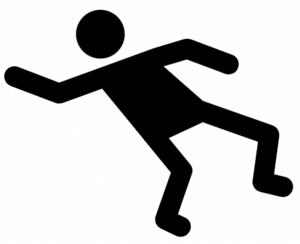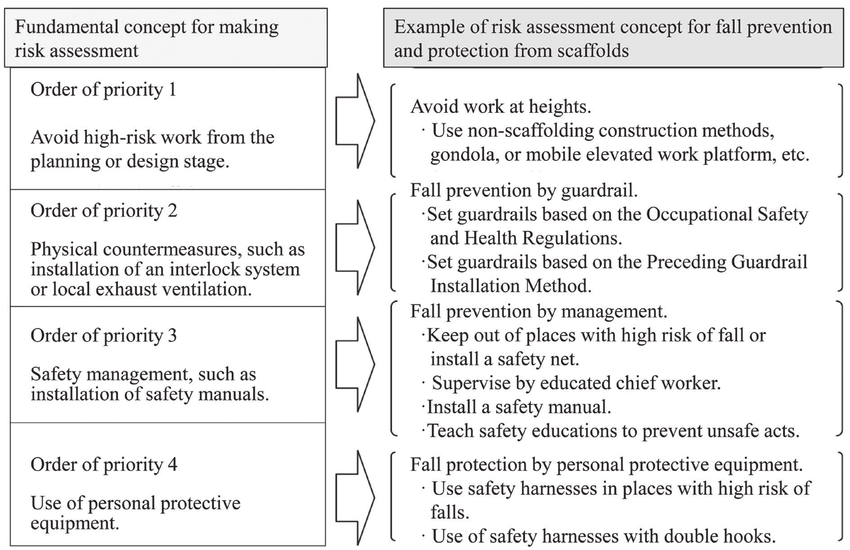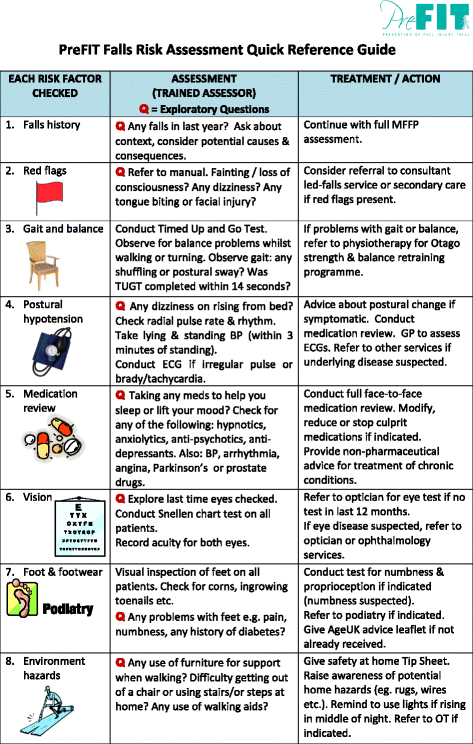The 3-Minute Rule for Dementia Fall Risk
The 3-Minute Rule for Dementia Fall Risk
Blog Article
The smart Trick of Dementia Fall Risk That Nobody is Talking About
Table of ContentsIndicators on Dementia Fall Risk You Should KnowDementia Fall Risk - QuestionsThe 8-Second Trick For Dementia Fall RiskDementia Fall Risk for Beginners
A fall threat evaluation checks to see exactly how likely it is that you will certainly drop. The analysis generally consists of: This includes a collection of concerns about your overall wellness and if you have actually had previous falls or issues with balance, standing, and/or walking.STEADI consists of testing, assessing, and treatment. Treatments are suggestions that might decrease your risk of falling. STEADI consists of 3 actions: you for your risk of succumbing to your threat factors that can be boosted to attempt to stop drops (for instance, equilibrium problems, damaged vision) to lower your danger of dropping by making use of reliable approaches (for instance, giving education and learning and resources), you may be asked numerous concerns consisting of: Have you fallen in the past year? Do you really feel unstable when standing or walking? Are you fretted about falling?, your provider will test your strength, balance, and gait, using the following fall analysis tools: This examination checks your gait.
If it takes you 12 secs or even more, it might indicate you are at greater threat for an autumn. This test checks stamina and balance.
Relocate one foot midway ahead, so the instep is touching the huge toe of your various other foot. Relocate one foot fully in front of the various other, so the toes are touching the heel of your various other foot.
The 4-Minute Rule for Dementia Fall Risk
Most falls occur as an outcome of multiple contributing variables; as a result, taking care of the risk of dropping starts with recognizing the aspects that add to drop risk - Dementia Fall Risk. A few of the most appropriate risk variables include: Background of previous fallsChronic clinical conditionsAcute illnessImpaired stride and equilibrium, lower extremity weaknessCognitive impairmentChanges in visionCertain risky medications and polypharmacyEnvironmental factors can likewise enhance the danger for falls, consisting of: Inadequate lightingUneven or damaged flooringWet or slippery floorsMissing or damaged hand rails and order barsDamaged or incorrectly fitted tools, such as beds, mobility devices, or walkersImproper use of assistive devicesInadequate guidance of the people residing in the NF, including those that show aggressive behaviorsA effective fall risk management program requires a comprehensive professional assessment, with input from all participants of the interdisciplinary team

The treatment strategy ought to also consist of treatments that are system-based, such as those that promote a secure atmosphere (appropriate lights, hand rails, grab bars, etc). The efficiency of the interventions need to be assessed regularly, and the care plan revised as required to reflect changes in the fall risk analysis. Implementing a fall threat monitoring system making use of evidence-based best practice can lower the occurrence of drops in the NF, while limiting the possibility for fall-related injuries.
Our Dementia Fall Risk PDFs
The AGS/BGS guideline advises screening all adults aged 65 years and older for fall risk annually. This screening includes asking clients whether they have fallen 2 or more times in the previous year or looked for clinical focus for an autumn, or, if they have actually not fallen, additional info whether they feel unstable when strolling.
People who have dropped once without injury ought to have their balance and gait examined; those with gait or balance abnormalities need to get added evaluation. A background of 1 autumn without injury and without gait or equilibrium troubles does not require further evaluation beyond ongoing yearly loss danger screening. Dementia Fall Risk. A fall danger evaluation is called for as component of the Welcome to Medicare exam

The Single Strategy To Use For Dementia Fall Risk
Documenting a drops background is one of the high quality signs for autumn prevention and administration. copyright medicines in specific are independent predictors of falls.
Postural hypotension can frequently be minimized by decreasing the dose of blood pressurelowering drugs and/or quiting medicines that have orthostatic hypotension as a negative effects. Use above-the-knee assistance tube and copulating the head of the bed elevated might additionally decrease postural decreases in click here for info high blood pressure. The preferred aspects of a fall-focused physical exam are displayed in Box 1.

A TUG time read here above or equal to 12 secs recommends high autumn danger. The 30-Second Chair Stand examination examines reduced extremity stamina and equilibrium. Being unable to stand from a chair of knee elevation without making use of one's arms shows enhanced fall risk. The 4-Stage Equilibrium test analyzes static equilibrium by having the individual stand in 4 placements, each progressively a lot more tough.
Report this page